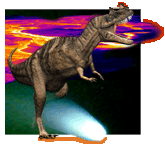New evidence concerning the age and biotic effects of the Chicxulub impact in NE Mexico
Type
In the 1990s the Chicxulub impact was linked to the K–T boundary by impact spherules at the base of a sandstone complex that was interpreted as an impact-generated tsunami deposit. Since that time a preponderance of evidence has failed to support this interpretation, revealing long-term deposition of the sandstone complex, the K–T boundary above it and the primary impact spherule ejecta interbedded in Late Maastrichtian marls below. Based on evidence from Mexico and Texas we suggested that the Chicxulub impact predates the K–T boundary. Impact-tsunami proponents have challenged this evidence largely on the basis that the stratigraphically lower spherule layer in Mexico represents slumps and widespread tectonic disturbance, although no such evidence has been presented. The decades-old controversy over the cause of the K–T mass extinction will never achieve consensus, but careful documentation of results that are reproducible and verifiable will uncover what really happened at the end of the Crectaceous. This study takes an important step in that direction by showing (1) that the stratigraphically older spherule layer from El Peñon, NE Mexico, represents the primary Chicxulub impact spherule ejecta in tectonically undisturbed sediments and (2) that this impact caused no species extinctions. PDF

